Of the hundreds of exhibitors at golf’s annual PGA Show, there are more tech-focused companies every year.
While that might be the case in every industry, the ancient game is more entwined to history and tradition than most others.
But that doesn’t mean golf hasn’t been progressive, especially in more recent years. Here’s a rundown of some of the newest, most interesting tech-related golf finds on the market.
PuttView X
These augmented reality glasses from a German-based company named PuttView visualize the path and aiming lines for putts on any green—not just on an indoor, synthetic practice green either, but outside on an actual course. A team of engineers spent years developing this first-of-its-kind technology, which is meant to be used as a training aid to help golfers better read putting lines and gauge speed. Think of it like a Trackman for putting. And with a similar price tag. At almost $15,000, the PuttView X is a pioneering innovation, but one that’s definitely targeted at a select few.
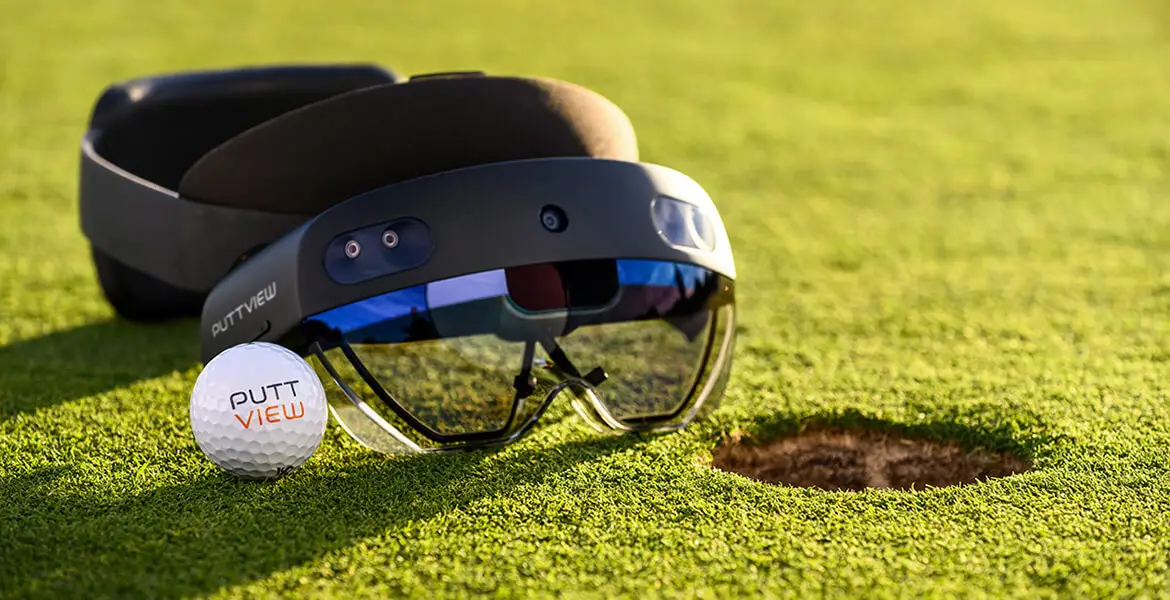
Precision Pro NX10 Rangefinder
The latest update of Precision Pro’s distance-measuring technology comes with a new look—thanks to the game’s first fully customizable rangefinder. Removable side plates and face plates on the NX10 model offer 50 to 60 patterns, with looks that go well beyond the stock flat colors. Among the most popular are an American flag-inspired design and a camouflage style. John Daly recently partnered with the company ahead of an event, adding an Arkansas Razorback logo to his rangefinder. Precision Pro is also continuing to work with teams and companies to incorporate a more personal touch on one of the game’s most common and frequently used technologies.
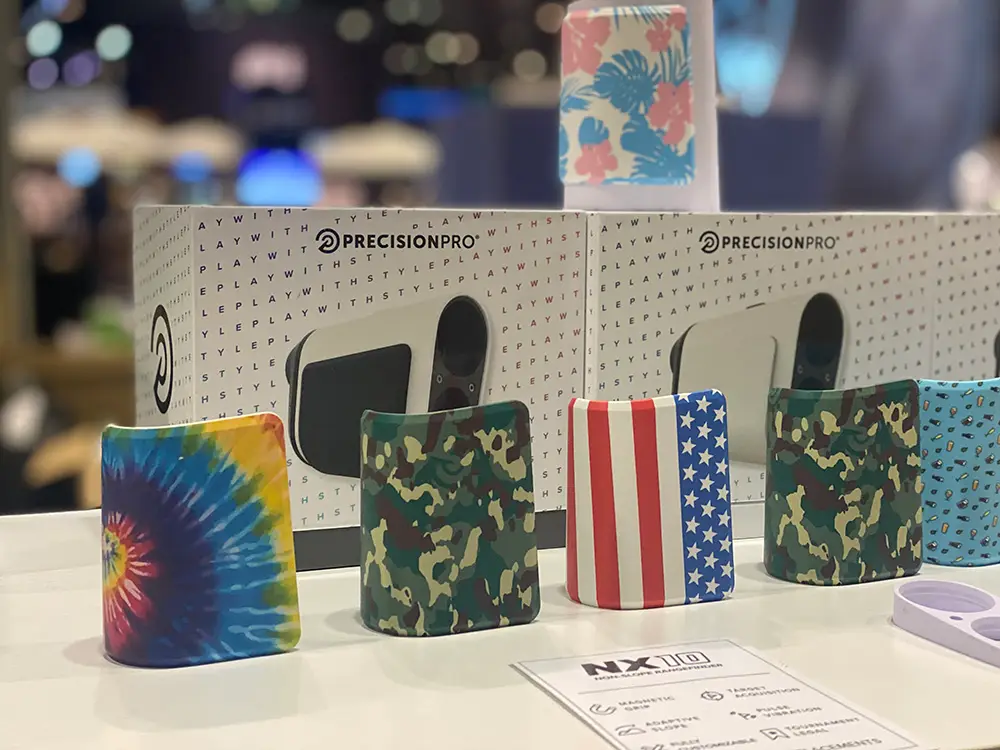
Zen Swing Stage
Golfers are getting to play indoors on a whole new level with Zen’s Green Stage (for realistic indoor putting) and now the company’s new Swing Stage. Both of the UK-based Zen’s products are intended to help golfers improve by offering putting and/or full-swing shots on realistic slopes indoors. After all, the real golf course is almost never flat. The adjustable playing surfaces are intended for golf academies, golf retail stores, and the occasional home setup, not to mention the increasing number of indoor simulator locations. Because if you’re playing a course like Chambers Bay or Bethpage Black on a sim at a golf-entertainment venue, there’s probably a pretty good chance you’ll face an uneven lie or two.
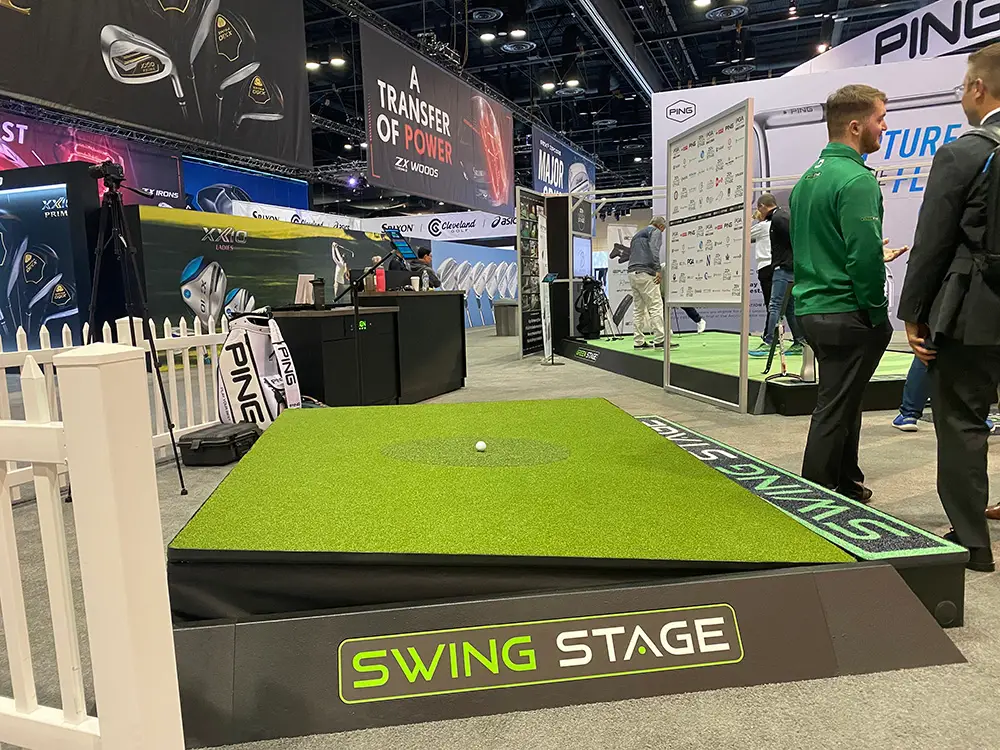
Power Tee
First off, this isn’t just a product that helps keep lazy golfers from bending over between practice swings. While it automatically tees up practice balls (six million a day worldwide), the Power Tee system has 40 adjustable tee heights and is intended to help provide more consistency for players of all abilities. While the majority of Power Tee’s partners are international, it’s continually expanding its footprint in the U.S., especially as the number of off-course venues increases and facilities upgrade their range and practice amenities. The stats don’t lie either—the automatic Power Tee system does lead to more balls being hit every session, which is good news for operators. In other words, don’t be surprised if you see a Power Tee at a range near you soon.
Vantage Tag’s Single Rider Cart
Last year, Vantage Tag Systems unveiled golf carts officially licensed by Shelby Cobra, complete with the snake logo on the grill. This year, its Vantage’s SR-1 single rider golf cart is turning heads. Compared to a two-rider golf cart that could easily top 1,200 pounds with passengers, the SR-1 is surprisingly light at around 200 pounds—constructed of lightweight composite material around an aircraft grade aluminum frame that’s chock full of advanced technology and connectivity. While single-rider vehicles haven’t gained broad acceptance among golf facility operators, the SR-1 is seeking to increase play by offering a revenue share model that doesn’t require any upfront capital or a financing commitment. Most importantly though, it looks pretty cool.
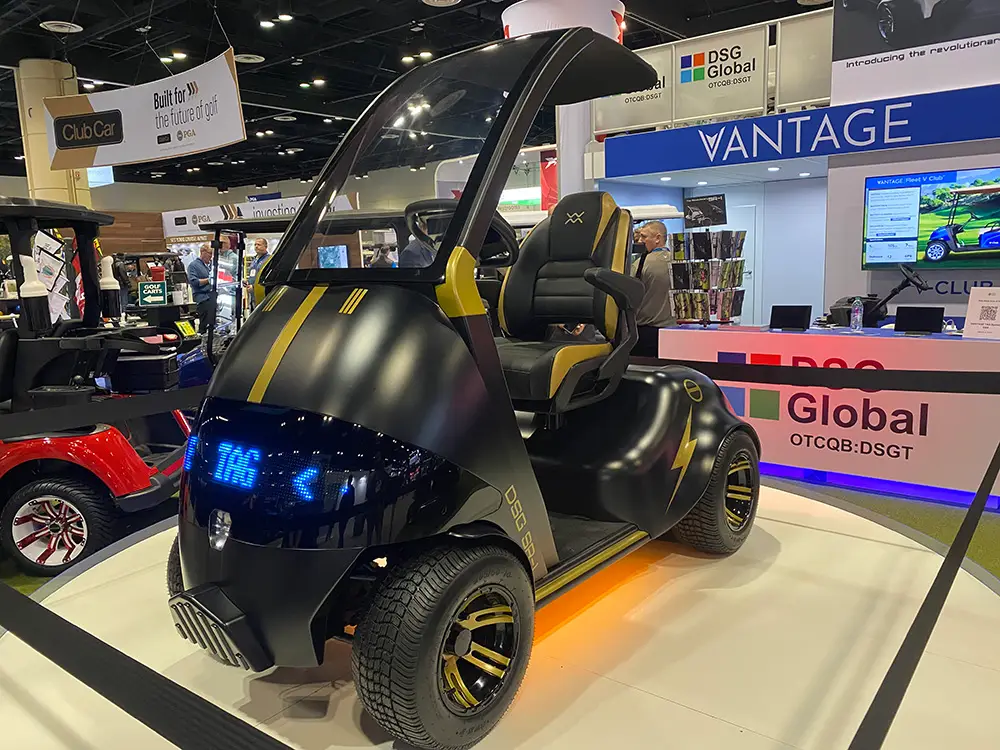
OnCore Golf’s i-Roll ball
A number of years back, OnCore announced plans for a data-tracking and GPS-microchipped “Genius Ball” with embedded electronics. While that smart golf ball remains in development, the company is set to unveil a putting-focused precursor: the i-Roll. What better place to focus while working up to the full swing (which has significantly more of an impact on a ball packed with technology)? The i-Roll wirelessly tracks info such as ball velocity, spin rate, trajectory, distance, and location. It’s expected to have a variety of uses, from standard putting feedback to automatic scorekeeping on a miniature golf course and even for wedge play on a par-3 course. At those short courses, there just might be opportunities for operators to offer rolling hole-in-one payouts to guests who make a tracked ace while using the i-Roll balls. Meanwhile, the data capture can be used for club fitting, instruction, entertainment, and more.
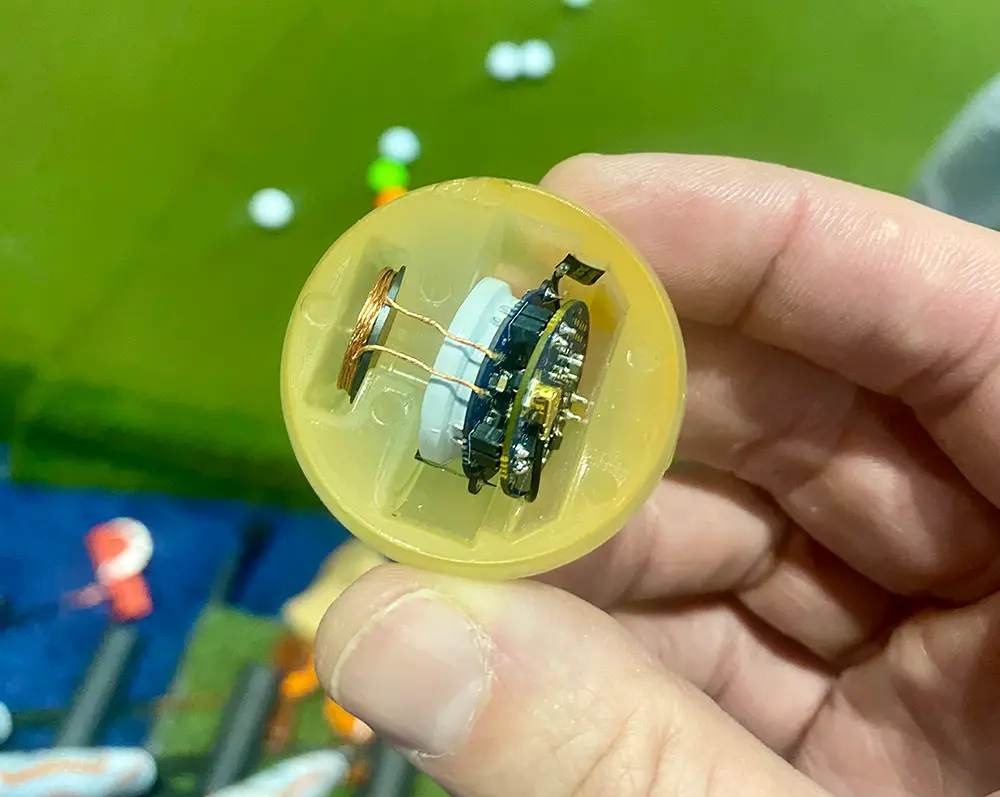
Mach One Golf Balls
Ok, this golf ball isn’t nearly the level of tech as the one above… but it’s a nice story. And different. You might have seen promoted ads for the Mach One pop in your Instagram feed. Yes, this is a novelty golf ball, a one-use product that some golfers insist sounds like a firecracker or gunshot on contact. The family behind Mach One launched the product during Covid after several had lost jobs, replicating a mass-produced version of a ball their fun-loving and golf-loving grandfather invented 20 years earlier. “It feels like we’re continuing grandpa’s legacy,” says a member of the family that manufactures the balls in Orange County, Calif. Now this might not be the tech that improves your game, but let’s face it, there are plenty of golfers focused on other things, like getting a good laugh at the expense of a playing partner.
What new golf tech are you excited about in 2023?






